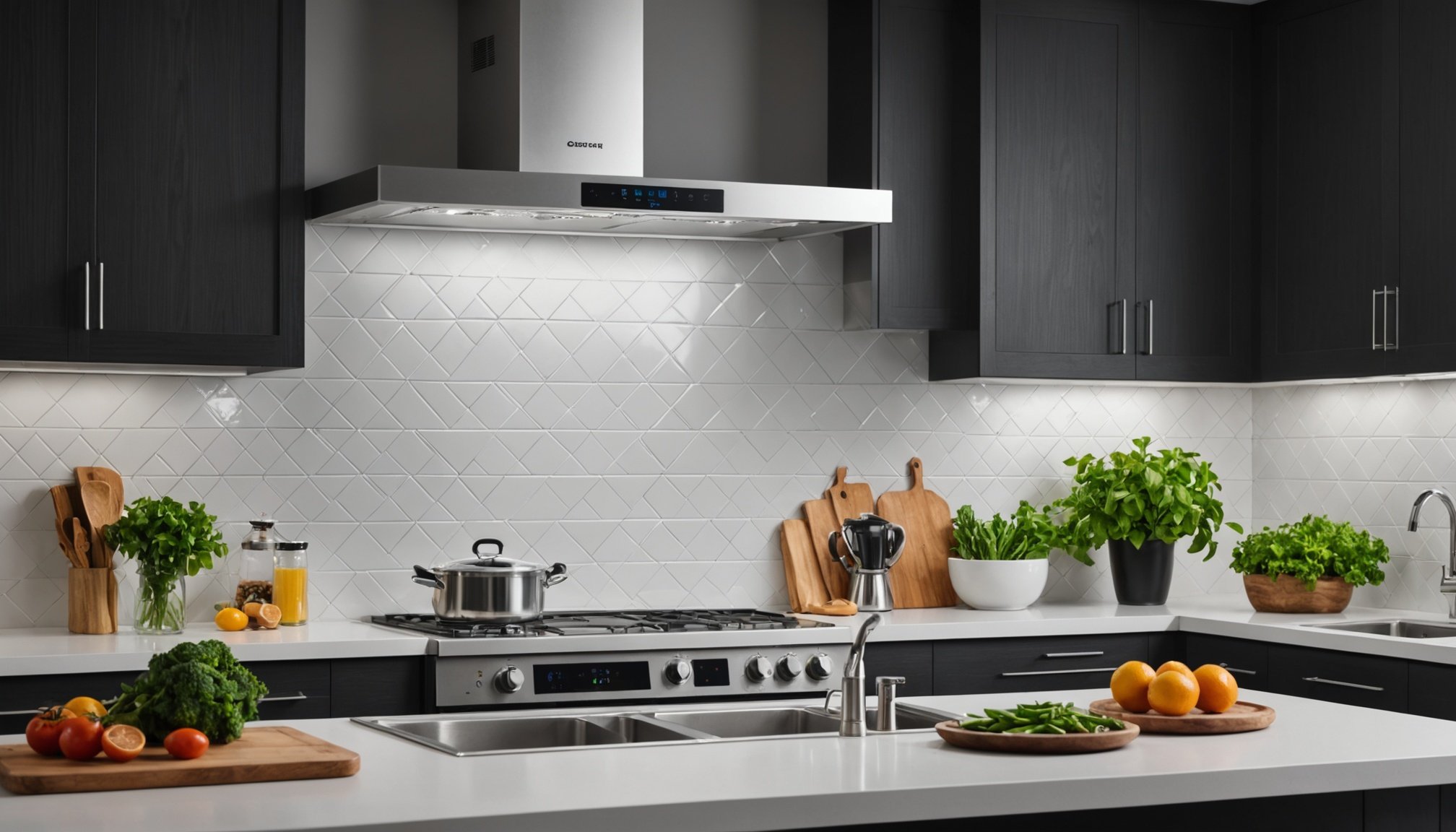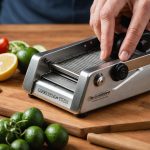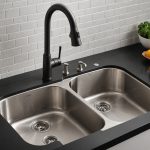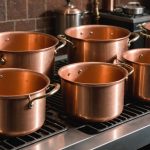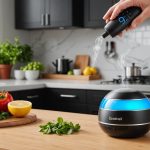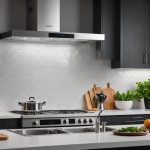Overview of UV-C Air Purifiers
Modern UV-C air purifiers harness ultraviolet light to neutralize airborne pathogens, offering an innovative solution for cleaner kitchen air. The operation of these devices revolves around UV-C technology, which emits light with a short wavelength capable of disrupting the DNA of microorganisms, preventing their reproduction and effectively rendering them harmless.
Unlike traditional air purifiers, which rely on mechanical filtration techniques such as HEPA filters to trap particles, UV-C models provide an added layer of protection by directly targeting bacteria, mold spores, and viruses that may escape conventional filters. This unique approach not only captures but also eradicates these harmful contaminants, resulting in improved air quality.
Also to discover : Energize your calorie burning: revolutionize your cooking space with a bluetooth speaker for dancing and musical enjoyment!
In kitchen environments, maintaining high air quality is crucial. The kitchen is a frequent hotspot for indoor pollutants, including smoke, food odours, and volatile organic compounds (VOCs) released during cooking. By integrating a UV-C air purifier, residents can significantly reduce exposure to these pollutants, thereby enhancing kitchen air quality and creating a healthier living space.
As awareness grows about the effects of poor air quality on respiratory health, especially in high-traffic zones like kitchens, UV-C air purifiers are becoming an indispensable tool, ensuring that kitchens remain both functional and safe.
Also to read : Boost your meal prep: how kitchen island positioning enhances healthy cooking efficiency
Health Advantages of UV-C Air Purifiers
UV-C air purifiers offer significant health benefits by effectively eliminating harmful contaminants. Research has demonstrated UV-C light’s effectiveness against pathogens, making it a reliable solution for air purification. This technology inactivates bacteria, viruses, and mold spores, ensuring that such microorganisms are rendered harmless and unable to proliferate.
Improved air quality has a direct impact on respiratory health. Exposure to poor air quality, especially in kitchens, can exacerbate asthma and allergies. By using UV-C air purifiers, residents can experience reduced symptoms and greater overall well-being. Cleaner air is particularly important in avoiding the health risks associated with volatile organic compounds (VOCs) and other pollutants commonly found in kitchen environments.
The long-term health benefits of cleaner kitchen air are substantial. With fewer pollutants, there is a decreased risk of chronic respiratory issues and even conditions like headaches and fatigue. Over time, consistent use of UV-C air purifiers contributes to a healthier, more comfortable home environment. Kitchen air quality improvement through these purifiers supports not only immediate health benefits but also fosters long-term wellness. Hence, integrating these devices is not just a recommendation, but a priority for anyone concerned about indoor air quality.
Common Contaminants Found in Kitchens
Kitchens are breeding grounds for various air contaminants due to the frequency of cooking and food preparation. A notable contributor to kitchen pollution is the release of volatile organic compounds (VOCs), which result from frying, baking, or grilling. These compounds not only impact air quality but can also pose health risks. VOCs, alongside fumes and particles from cooking oils, are among the prevalent airborne pollutants.
Allergens such as mold spores and dust mites are also common in kitchen environments. Mold thrives in damp areas like sinks and can disperse spores into the air, exacerbating allergy symptoms for sensitive individuals. Similarly, bacteria from food handling can become airborne, posing additional health risks.
Food safety is closely tied to air quality. Contaminants may settle on surfaces, affecting not just the air but also the food prepared in these areas. Poor air quality can lead to an unpleasant cooking environment and compromise food integrity, emphasizing the need for effective purification solutions to maintain both safety and comfort. Understanding these pollutants is essential for implementing effective measures, like UV-C air purifiers, to mitigate their adverse effects.
Case Studies and User Testimonials
In examining the effectiveness of UV-C air purifiers, several real-life case studies and user testimonials shed light on their benefits.
Successful Installations
Homeowners have implemented UV-C air purifiers in various kitchen settings, reporting noticeable improvements. For example, in a bustling family kitchen, the installation of a UV-C unit reduced food odours and noticeably improved kitchen air quality. Such successes underline the practicality of these devices in residential environments, demonstrating their capability to handle diverse household pollutants.
Health Improvements Reported
Various users have reported substantial health improvements following the installation of UV-C air purifiers. Testimonies frequently mention decreases in allergy and asthma symptoms, attributed to the device’s ability to eliminate allergens and pathogens effectively. Respiratory health benefits are significant, with users often expressing relief from persistent symptoms after integrating UV-C technology into their homes.
User Satisfaction Ratings
Overall satisfaction with UV-C air purifiers is reflected in high user satisfaction ratings. Users laud their purifier’s effectiveness in eliminating harmful contaminants and enhancing air quality. Reviews frequently highlight the seamless integration into homes and the intuitive operation of these devices, further affirming their value and reliability. With these affirmative testimonials, UV-C air purifiers are clearly a preferred solution for many.
Tips for Choosing the Right UV-C Air Purifier
Selecting a UV-C air purifier for your kitchen involves considering several crucial factors to ensure optimal air quality improvement. Understanding these features can help you make an informed decision.
First, assess the features integral to UV-C air purifiers. Look for units with high UV-C intensity and effective coverage. Some advanced models offer additional layers of filtration, such as HEPA filters, to trap particles before UV-C light neutralizes the microorganisms. Efficiency ratings are a key consideration, as they indicate how well the device purifies the air.
Recommended brands often feature customizable settings to accommodate different kitchen spaces. While brands like Molekule and Dyson have been popular for their efficacy and design, ensure the unit fits your specific size requirements.
Moreover, consider the layout of your kitchen. Larger spaces require purifiers with higher coverage capabilities, while compact models might suffice for smaller kitchens. Wall-mounted options can save counter space if needed.
Prioritize the right features based on your kitchen’s size and layout to ensure you select a unit that enhances air quality effectively. This not only maintains a healthy living environment but also extends the lifespan of the appliance, facilitating better air purification results.
Maintenance and Care for UV-C Air Purifiers
Understanding proper maintenance and care for UV-C air purifiers is essential to maximise their performance and lifespan. Regular attention not only enhances the device’s efficiency but also ensures continued protection against airborne pollutants.
Start with regular cleaning as a fundamental maintenance step. Cleanse the exterior surfaces to prevent dust accumulation, which can impede functionality. Most importantly, replace or clean any additional filters, such as HEPA or carbon filters, as per manufacturer’s recommendations. These components trap larger particulate matter before UV-C light neutralizes microorganisms.
Replace UV-C bulbs periodically, typically every 9 to 12 months or based on usage and manufacturer guidelines. This guarantees the air purifier’s effectiveness, as bulb intensity diminishes over time, affecting its capacity to neutralize pathogens.
Follow specific cleaning protocols tailored to the model you own. Always refer to the manual for detailed instructions, paying attention to safety precautions. Typically, this involves turning off and unplugging the unit before maintenance.
By incorporating these maintenance tips, you ensure not only enhanced air quality but also a healthier, prolonged appliance lifecycle, maintaining optimal indoor environments in kitchens and beyond.

